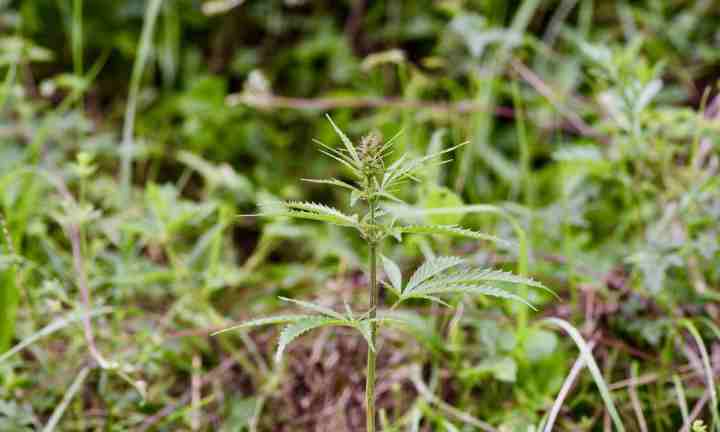According to research by the University of Lausanne, an ancestral plant dates from the Neolithic period and, from it, new species emerged, such as hemp and marijuana.

SWITZERLAND — Research released this Friday in the journal Science Advances suggests that the first roots of Cannabis sativa emerged in northwestern China, in the early Neolithic period (between 7,000 and 2,500 BC). Researchers at the University of Lausanne, Switzerland, responsible for the study, say the discovery could offer new applications of the plant both in medicine and agriculture.
The Cannabis sativa is a canabiáceas family of an herbaceous plant used in versions of weed and hemp. Despite being a source of fiber and medicinal and recreational drugs, the history of the plant’s domestication is not well understood, due to legal restrictions on its use, which highlights the research.
According to Luca Fumagalli, an Italian specialist in population genetics and evolutionary biology who participated directly in the study, the discovery of the origin of cannabis was made possible thanks to the sequencing of 110 entire genomes, which can be categorized into four genetic groups. Together, they cover the entire spectrum of wild crop plants, land strains, historic cultivars, and modern hemp and marijuana hybrids.
– Knowing which genes were specifically selected during the domestication process, it is possible to develop varieties with specific properties for humans and for agriculture – explains Fumagalli.
Cultivars are plant species that have been improved due to the alteration or introduction by man of a characteristic that they did not have before.
Cultivars are plant species that have been improved due to the alteration or introduction by man of a characteristic that they did not have before.

Despite not having psychoactive substances and therefore not being considered a drug, hemp cultivation is controlled by law, and its legalization varies from country to country. Currently, the United States and China are among the largest producers of the plant. When legalized, it can be used in the production of fibers, grains, or medicinal products.
Marijuana is used mainly for medicinal and recreational purposes. Uruguay, Canada, and Mexico are examples of countries that have approved the use of the herb. In Brazil, the use of products from cannabis is prohibited.
Hemp is a variety of Cannabis that has tetrahydrocannabinol contents below 0.3%. Marijuana, on the other hand, can be defined as a species that has very high levels of psychoactive substance — explains Renato Filev, a neuroscientist at the Federal University of São Paulo (USP) and a specialist in Cannabis, who did not participate in the research.
Cannabis twelve thousand years ago
The researchers recognized genetic relationships among 104 cannabis clusters, out of 110 investigated. The results support an evolutionary scenario that demonstrates the variability in the composition of cannabinoids among plants, through the losses of medicinal and agricultural functions due to artificial selection by the first farmers. From this, researchers categorize Cannabis sativa into four distinct groups.
The first of them is basal Cannabis, which is the ancestral plant of Cannabis sativa, found in China. According to the study, the first dating of the species is 12 thousand years ago and, based on it, varieties of substances such as hemp, the so-called domesticated drugs, and marijuana emerged. However, as it has been subjected to fewer artificial selections throughout history, it is possible that the Basal type is already extinct.

Its most similar offspring is the domesticated drug—with “spontaneous growth”—found in southern China, India, and Pakistan. It is a plant for medicinal use that, as it has not undergone major changes in agriculture, produces tetrahydrocannabinol (TCH) inferior to commercial marijuana.
Cannabis was used 2,500 years ago in China.
Two other branches are hemp, cultivated for fiber production and already distributed around the world, and marijuana, which is used in the production of high THC and already has a wider distribution around the world.
— Research shows that basal Cannabis is a common root that has been lost over time and no longer exists. Today we have marijuana, hemp and the acclimatized drugs as varieties, which were domesticated in some countries in Asia. What most differentiates the domesticated drug from hemp and marijuana is that it has not undergone an appropriate genetic selection for the production of a specific raw material, whether fiber, seed, resins – explains Filev.
Scholars at the University of Lausanne have identified genes in hemp that may have been modified during cultivation, including those related to branch formation, flowering time, and the biosynthesis of lignin (a molecule associated with cellulose).
In marijuana, a gene was found involved in the biosynthesis of cannabinoids and associated with a great capacity for genetic mutation. These characteristics make the two varieties more modern and with the potential to gain new ways of use.
— as genetic diversity is distributed within species, it is possible to develop breeding programs with specific populations to improve the use of each one — concludes Fumagalli.

